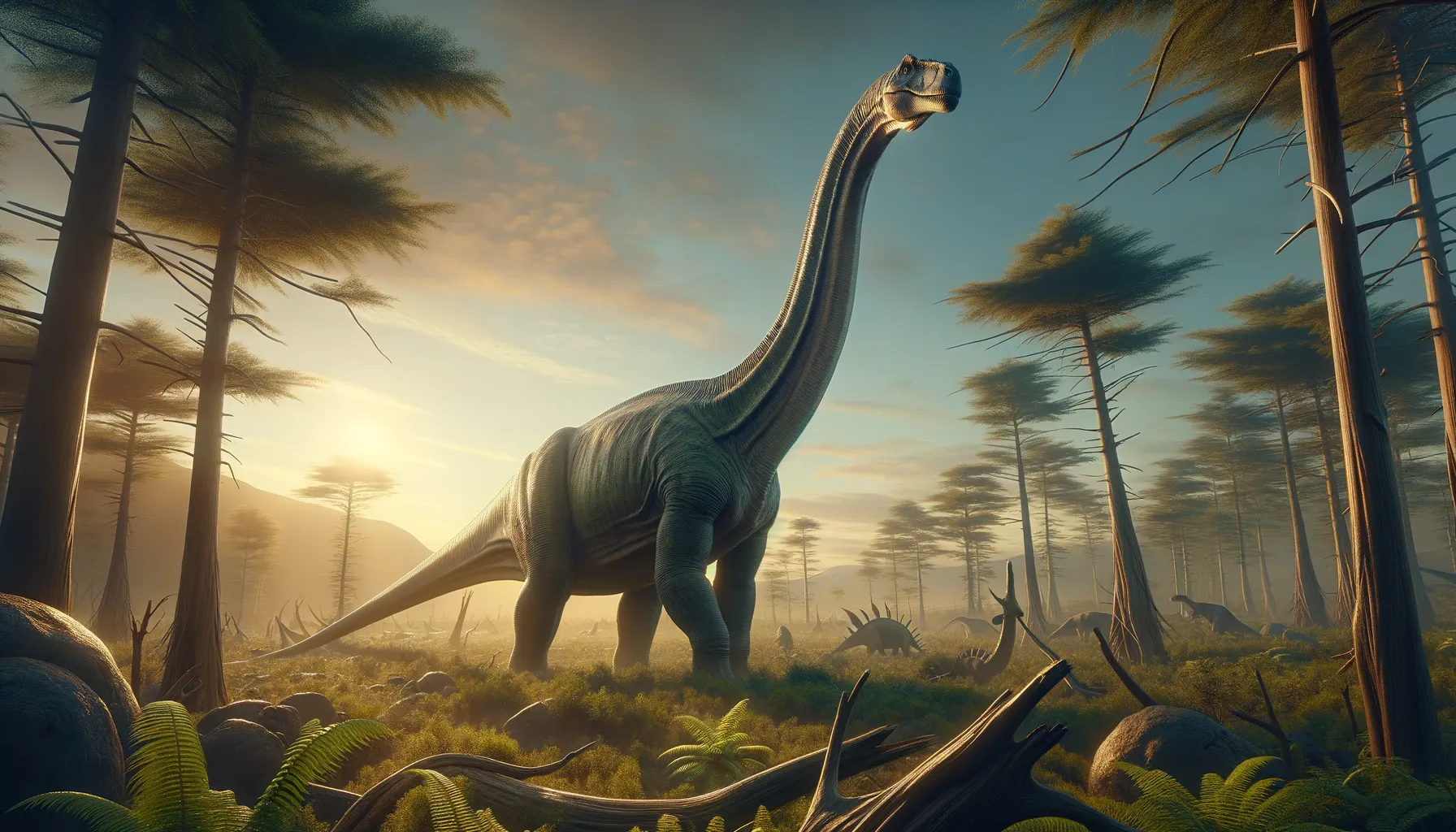
Brachiosaurus
Reaching new heights in the Jurassic world.
Period
Jurassic
Length
Approximately 25 meters long.
Height
About 12 to 16 meters tall.
Weight
Up to 80 tons, much like 15 elephants.
Standing tall with its long neck reaching towards the treetops, the Brachiosaurus was an iconic herbivorous dinosaur of the Jurassic period. Its towering stature and immense size made it one of the largest known land animals ever to walk the Earth. The Brachiosaurus' unique limb structure, with forelegs longer than its hind legs, set it apart and allowed for a browsing advantage high above the ground.
Diet
Brachiosaurus was a herbivore, feeding primarily on foliage from trees and large plants. Its long neck allowed it to browse treetops at heights unreachable to many other herbivores.
Hunting
As a herbivore, Brachiosaurus did not hunt for food but instead foraged. Its feeding involved stripping leaves and branches using its specialized teeth and powerful jaw.
Environmental challenges
Living in a prehistoric world, Brachiosaurus had to adapt to changes in climate and vegetation. Seasonal variations would have impacted food availability, requiring the dinosaur to travel or adjust its diet. The sheer size of the Brachiosaurus meant it needed vast amounts of foliage to sustain itself, likely leading to competition with other large herbivores for resources.
Speed
Slow-moving due to massive size.
Lifespan
Estimated to be around 100 years.
First discovery
First discovered in Colorado, USA, in 1900.
Fun Facts
- Brachiosaurus was one of the tallest dinosaurs, with an estimated height of about 40 to 50 feet, allowing it to reach high vegetation.
- Unlike many other dinosaurs, Brachiosaurus had longer front legs than back legs, giving it a giraffe-like posture.
- Brachiosaurus lived approximately 154 to 150 million years ago during the Late Jurassic period.
- It was a herbivore, feeding primarily on conifers, ginkgoes, and other high-growing plants.
- Scientists believe Brachiosaurus could weigh as much as 56 tons, making it one of the heaviest dinosaurs that ever lived.
- The name 'Brachiosaurus' means 'arm lizard,' referring to its long front limbs.
- Brachiosaurus fossils have mainly been found in North America, particularly in the Morrison Formation, a site rich in dinosaur remains.
Growth and Development
Brachiosaurus grew to full size over several decades, requiring significant energy intake and periods of rapid growth. Juveniles likely faced threats from predators until their size provided them safety. With age, growth rates slowed, and mature Brachiosaurus maintained their size and strength while continuing to browse for food.
Habitat
This dinosaur primarily inhabited semi-arid environments with free-standing water sources and plentiful vegetation. Fossil evidence suggests Brachiosaurus lived in areas providing ample trees and open spaces for movement and feeding. It likely preferred regions where its neck could be utilized to full advantage, accessing otherwise unreachable foliage.
Interaction with other species
Brachiosaurus coexisted with numerous other species of dinosaurs, including both herbivores and carnivores. While competition for food with other sauropods was likely, its unique feeding adaptations reduced direct competition. The presence of large predators required Brachiosaurus to either band together in herds or rely on its size for self-defense.
Natural lifespan
Naturally, Brachiosaurus enjoyed long lifespans of up to a century.
Reproduction
Reproducing through eggs, Brachiosaurus likely laid its eggs in nests, monitored in herds. Parental care strategies remain speculative, but given its environment, young Brachiosaurus possibly benefited from group protection. Fossilized nests indicate eggs were potentially buried under sand or plant material to retain warmth.
Social behaviour
Brachiosaurus is thought to have lived in herds, a behavior advantageous for protection and resource location. Herd living provided safety in numbers against predators and facilitated migration to new feeding grounds. Social interactions would have included communication through vocalizations and possibly physical displays.
Fossil locations
Fossils of Brachiosaurus have been primarily found in North America, with significant discoveries in Colorado's Morrison Formation. Other finds have occurred in Africa, suggesting a wider prehistoric distribution. These fossils have provided key insights into its anatomy and environment during the Late Jurassic period.
